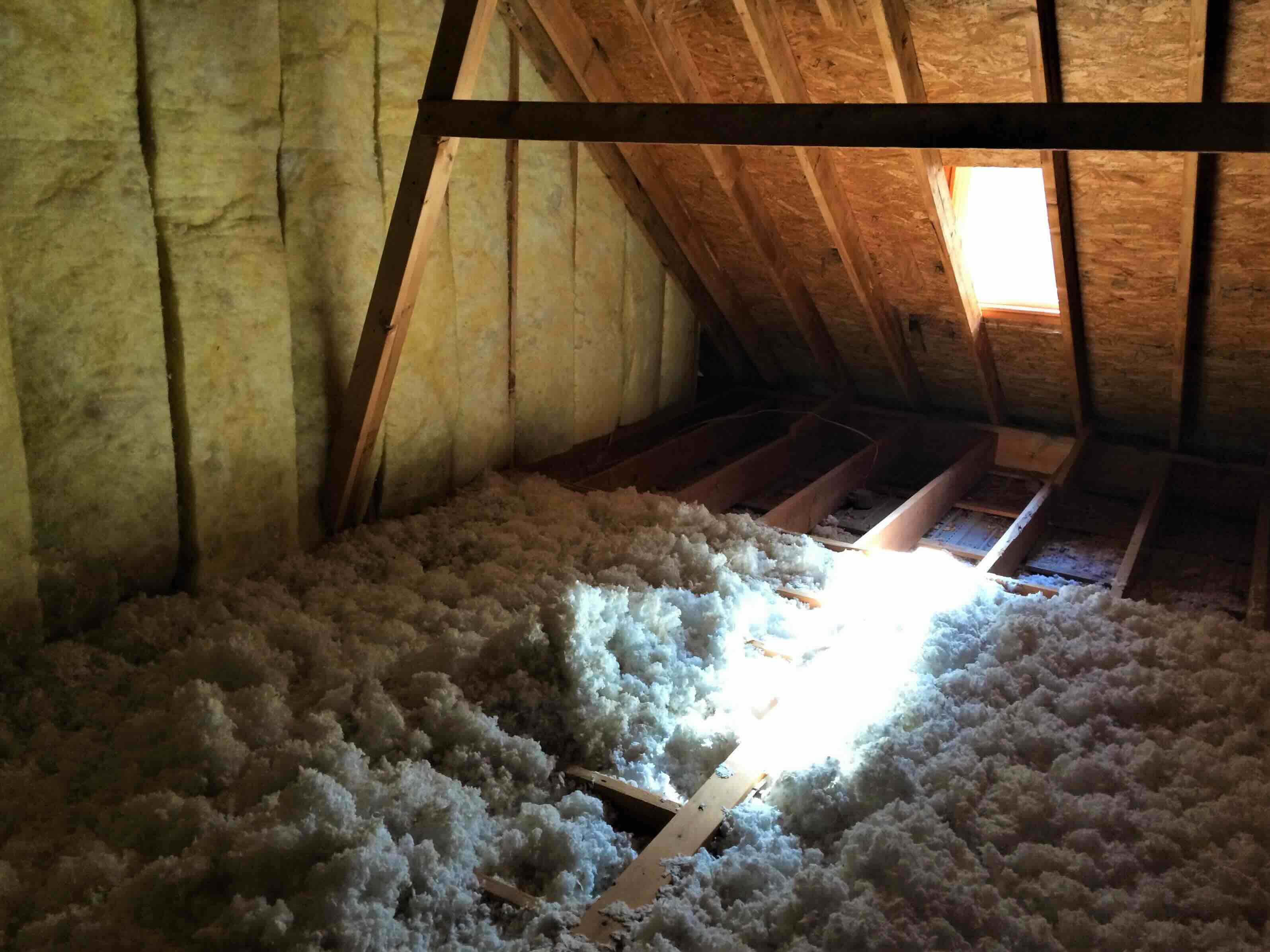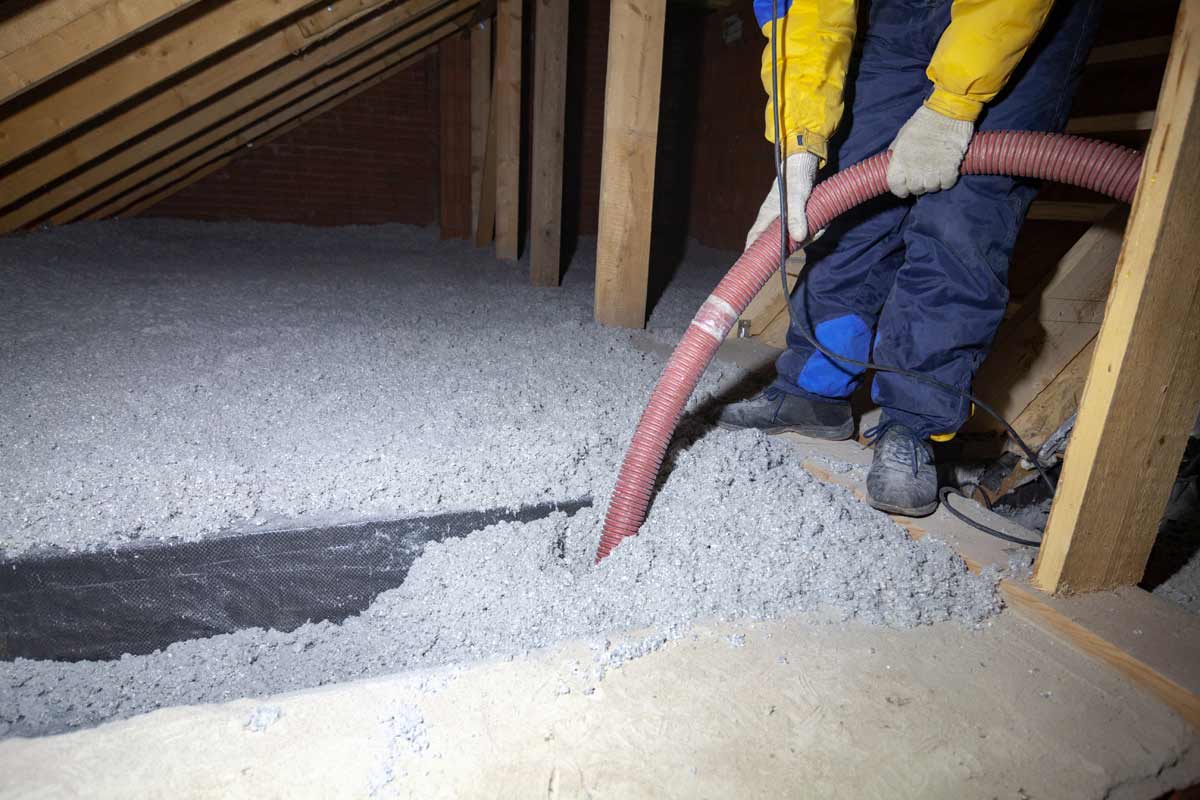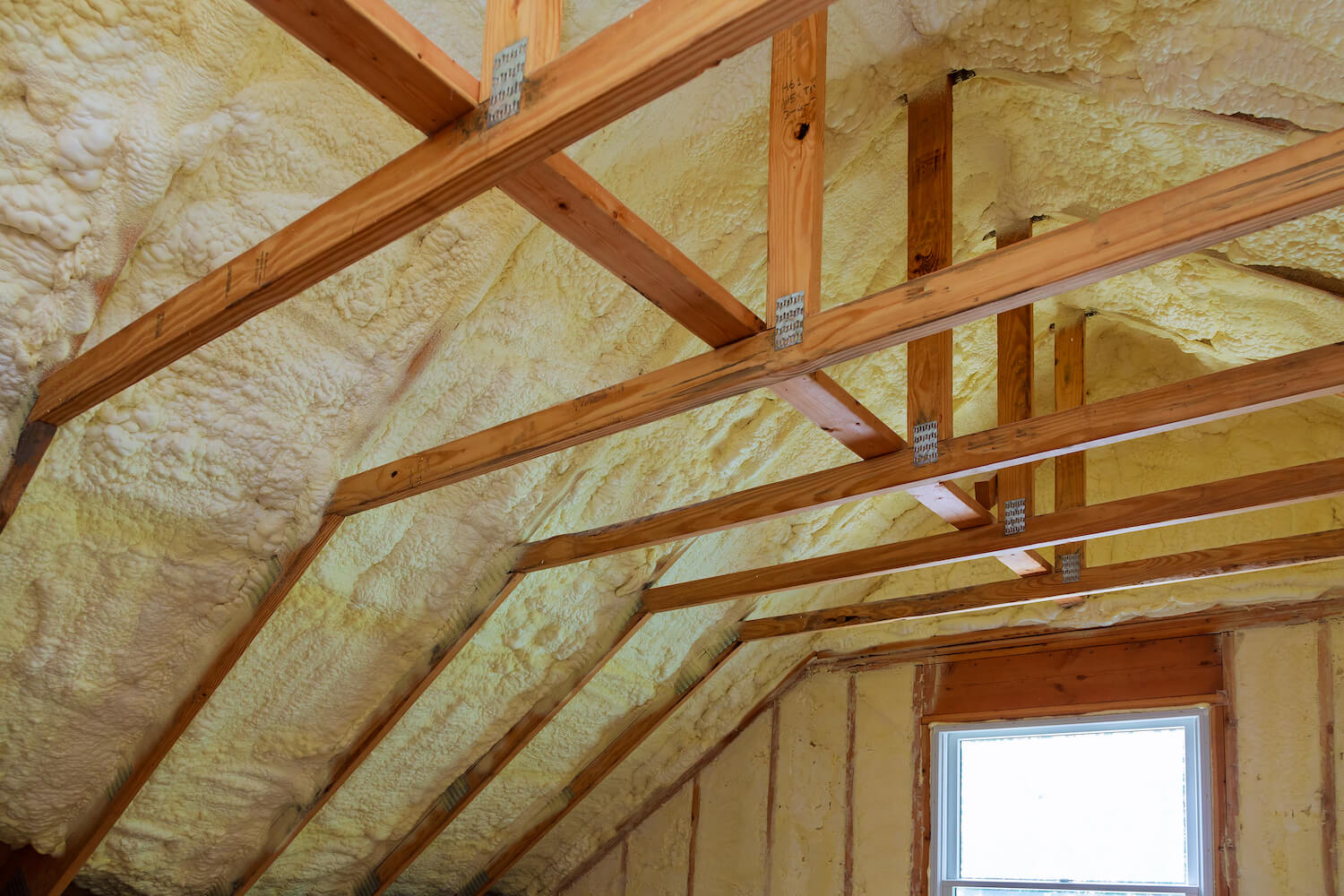Home>Articles>Which Is A Better Attic Insulation: Blown Or Rolled?


Articles
Which Is A Better Attic Insulation: Blown Or Rolled?
Modified: August 21, 2024
Discover the pros and cons of attic insulation, whether it's blown-in or rolled. Our articles provide expert insights to help you make the best decision.
(Many of the links in this article redirect to a specific reviewed product. Your purchase of these products through affiliate links helps to generate commission for Storables.com, at no extra cost. Learn more)
Introduction
When it comes to insulating your attic, there are two popular options to choose from: blown insulation and rolled insulation. Both types of insulation have their own advantages and disadvantages, and understanding the differences between them can help you make an informed decision.
Attic insulation plays a crucial role in maintaining the temperature and energy efficiency of your home. It helps to create a barrier between the inside of your home and the outdoor elements, preventing heat loss in the winter and heat gain in the summer. A well-insulated attic can also help to reduce your energy bills and make your home more comfortable year-round.
In this article, we will explore the differences between blown insulation and rolled insulation, and discuss the pros and cons of each. We will also provide you with some factors to consider when choosing the right type of insulation for your attic.
To be continued…
Key Takeaways:
- Blown insulation offers efficient coverage, soundproofing, and fire resistance, making it ideal for irregular attic spaces. However, potential settling and professional installation costs should be considered.
- Rolled insulation is easy to install, cost-effective, and provides consistent coverage, making it suitable for DIY projects. However, it may not be ideal for irregular attic shapes, and some gaps may remain between the batts.
Read more: How To Remove Blown-in Insulation In Attic
Difference Between Blown and Rolled Insulation
Blown insulation and rolled insulation differ in their installation process and material composition.
Installation Process: Blown insulation, also known as loose-fill insulation, is made up of small particles or fibers that are blown into the attic space using a special machine. The blown insulation fills in the gaps and crevices, effectively covering the entire area. On the other hand, rolled insulation, also called blanket insulation, comes in large rolls or batts that are cut to fit and laid down on the attic floor or between the joists.
Material Composition: Blown insulation is typically made from materials like fiberglass, cellulose, or mineral wool. These materials are lightweight, fluffy, and can conform to irregular surfaces, providing excellent coverage and insulation. Rolled insulation, on the other hand, is usually made of fiberglass or mineral wool. It comes in pre-cut rolls or batts, which are dense and provide a consistent layer of insulation when properly installed.
In terms of coverage, blown insulation fills in all the nooks and crannies, making it more effective at reducing drafts and heat loss. Rolled insulation, while providing good coverage, may leave some small gaps or areas without insulation, reducing its overall efficiency slightly.
Another important consideration is the R-value, which measures the insulation’s ability to resist heat transfer. Blown insulation usually has a higher R-value per inch compared to rolled insulation. This means that a thicker layer of rolled insulation may be required to achieve the same level of insulation as a thinner layer of blown insulation.
Lastly, the installation process for blown insulation requires the use of a special blowing machine, which may require professional help. Rolled insulation, on the other hand, can be relatively easier to install as it simply needs to be rolled out and cut to fit the space.
To summarize:
- Blown insulation is installed by blowing small particles or fibers into the attic space, while rolled insulation is laid down in large rolls or batts.
- Blown insulation is typically made from fiberglass, cellulose, or mineral wool, while rolled insulation is usually made of fiberglass or mineral wool.
- Blown insulation provides better coverage and fills in gaps more effectively, while rolled insulation may leave some small gaps.
- Blown insulation has a higher R-value per inch compared to rolled insulation.
- Blown insulation may require professional installation using a blowing machine, while rolled insulation can be simpler to install.
Pros and Cons of Blown Insulation
Blown insulation offers several advantages and disadvantages that are important to consider before making a decision:
Pros:
- Efficient Coverage: Blown insulation can provide better coverage as it fills in all the nooks and crannies of the attic space. This ensures that there are no gaps or areas without insulation, resulting in improved energy efficiency and reduced heat loss.
- Good for Irregular Spaces: Blown insulation is ideal for attics with irregular shapes or obstructions, as it can conform to the space and cover hard-to-reach areas. This makes it a versatile option for different attic configurations.
- Enhanced Soundproofing: Blown insulation has sound-dampening qualities, which can help reduce noise from outside sources such as traffic or neighbors. This can create a quieter and more peaceful living environment.
- Fire Resistance: Many types of blown insulation are treated with fire-resistant additives to improve their safety. This can provide an extra level of protection against fire hazards in your home.
Cons:
- Professional Installation: Blown insulation typically requires professional installation using specialized equipment. This can add to the overall cost of insulation, as you may need to hire experts to handle the installation process.
- Potential Settling: Over time, blown insulation might settle, which can lead to a decrease in its effectiveness. It may need to be regularly inspected and topped up to maintain its desired R-value and insulation efficiency.
- Dust and Allergy Concerns: Some blown insulation materials, such as cellulose, can release dust particles. This can be a concern for those with dust allergies or sensitivities and may require proper sealing and encapsulation to prevent dust from entering the living space.
- Higher Cost: Blown insulation can be more expensive compared to rolled insulation, primarily due to the need for professional installation and specialized equipment. The overall cost will depend on the size of the attic and the type of material used.
It is essential to weigh these pros and cons carefully and consider your specific needs, budget, and attic structure before deciding on blown insulation for your home.
Blown insulation is better for filling in small gaps and hard-to-reach areas, while rolled insulation is easier to install in standard attic spaces. Consider the specific needs of your attic when choosing between the two.
Pros and Cons of Rolled Insulation
Rolled insulation, also known as blanket insulation, has its own set of advantages and disadvantages. Here are some pros and cons to consider:
Pros:
- Easy Installation: Rolled insulation is relatively easy to install, making it a popular choice for DIY projects. The rolls or batts can be easily cut to fit the desired space, saving time and effort.
- Consistent Coverage: Rolled insulation provides consistent coverage when properly installed. This helps to minimize gaps and ensure even insulation throughout the attic, improving energy efficiency and reducing heat loss.
- Lower Cost: Rolled insulation is generally more affordable than blown insulation, making it a cost-effective option for homeowners on a tight budget.
- Longevity: Rolled insulation has a longer lifespan compared to blown insulation. With proper maintenance and care, it can maintain its effectiveness for many years.
Cons:
- Challenging for Irregular Spaces: Rolled insulation may not be suitable for attics with irregular shapes or obstructions. It can be challenging to fit the rolls or batts properly in spaces with protruding beams, electrical wiring, or other obstacles.
- Some Gaps May Remain: While rolled insulation provides consistent coverage, there is a chance that small gaps may be left between the batts. These gaps can reduce the overall insulation effectiveness and allow for heat transfer.
- Less Soundproofing: Rolled insulation typically has weaker sound-dampening properties compared to blown insulation. If noise reduction is a priority, additional soundproofing measures may be necessary.
- Thicker Installation: Rolled insulation may require a thicker layer to achieve the same level of insulation as blown insulation. This can be a concern if space is limited or if you want to preserve the headroom in your attic.
Considering these pros and cons will help you determine if rolled insulation is the right choice for your attic. Factors such as budget, installation ease, and the attic’s shape and size are important to consider when making your decision.
Factors to Consider When Choosing Insulation
Choosing the right insulation for your attic involves considering several factors to ensure optimal efficiency and effectiveness. Here are some key factors to keep in mind:
R-Value: The R-value measures the insulation’s resistance to heat flow. It is important to understand the recommended R-value for your region and the desired level of insulation. Higher R-values offer better insulation, but they may require thicker or denser insulation material.
Attic Space: Evaluate the size, shape, and accessibility of your attic space. Blown insulation is suitable for attics with irregular shapes or obstructions as it can fill in all the gaps. Rolled insulation works well in attics with open spaces and less complexity.
Installation: Consider whether you prefer a DIY installation or if you are comfortable hiring professionals. Rolled insulation is often easier to install on your own, while blown insulation typically requires specialized equipment and expertise.
Cost: Assess your budget for insulation. Blown insulation can be more expensive due to the cost of professional installation and specialized equipment. Rolled insulation may be a more cost-effective option, particularly for DIY projects.
Energy Savings: Determine how much energy efficiency you want to achieve. Higher insulation levels can result in greater energy savings over time. Consider the long-term benefits in relation to the upfront costs of the insulation materials.
Sustainability: Evaluate the environmental factor of the insulation materials. Look for eco-friendly options, such as recycled content or natural materials. Additionally, consider the lifespan and potential for recycling or reusing the insulation in the future.
Moisture Resistance: Consider the likelihood of moisture issues in your attic. Some insulation materials, such as fiberglass, are naturally resistant to moisture, while others may require additional vapor barriers for optimal protection.
Soundproofing: If reducing noise transfer is a priority, consider insulation materials with good sound-dampening properties, such as blown insulation. This is particularly important if your attic is located near busy streets or noisy environments.
Allergies and Sensitivities: Take into account any allergies or sensitivities that you or your family members may have. Some insulation materials may release dust or fibers during installation or deteriorate over time, potentially affecting indoor air quality.
Considering these factors will help you make an informed decision about which type of insulation, either blown or rolled, is the most suitable for your attic. It is recommended to consult with professionals or insulation experts to get specific guidance based on your home’s unique requirements.
Conclusion
When it comes to insulating your attic, choosing between blown insulation and rolled insulation is a decision that requires careful consideration. Each type of insulation comes with its own advantages and disadvantages, and understanding these differences is crucial in making an informed choice.
Blown insulation offers efficient coverage, particularly in irregular spaces, and provides better soundproofing. It can be a great option for those looking for professional installation and fire resistance. However, the potential settling and the need for professional installation can be drawbacks to consider.
On the other hand, rolled insulation is easy to install, cost-effective, and provides consistent coverage. It is a popular choice for DIY projects and offers longevity. However, it may not be suitable for attics with irregular shapes, and small gaps may be left between the batts.
Factors such as R-value, attic space, installation process, cost, energy savings, sustainability, moisture resistance, soundproofing, and allergies should all be taken into account when making your decision.
Ultimately, there is no one-size-fits-all answer to which type of insulation is better for your attic. It depends on your specific needs, budget, and the unique characteristics of your attic space. Consider consulting with insulation professionals to get personalized advice based on your home’s requirements.
Investing in the right insulation for your attic can have significant benefits, including improved energy efficiency, reduced utility bills, increased comfort, and a smaller environmental footprint. Make an informed decision and enjoy the long-term advantages of a properly insulated attic.
Frequently Asked Questions about Which Is A Better Attic Insulation: Blown Or Rolled?
Was this page helpful?
At Storables.com, we guarantee accurate and reliable information. Our content, validated by Expert Board Contributors, is crafted following stringent Editorial Policies. We're committed to providing you with well-researched, expert-backed insights for all your informational needs.















0 thoughts on “Which Is A Better Attic Insulation: Blown Or Rolled?”